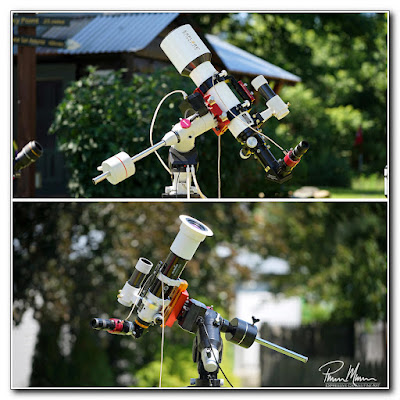New Telescope Mount is Incredible

Old mount on top, new mount at bottom. I already wrote about my problems with my old primary telescope mount so I won't get into the specific issues I have been experiencing with that old mount here in this blog entry. A couple of days ago, I was able to take the new mount out for a spin out under the sky for a bit of visual solar astronomy and I was very pleased. This new mount is simply incredible by comparison and is a tremendous upgrade from the old mount! It worked exactly as it should from start to finish. There were no unpleasant surprises nor any frustrations with the mount itself whatsoever. Whenever I used my old mount, my focus seemed to be more on the mount and its quirkiness rather than the object I was trying to view or image. These quirky traits could easily be justified as truly being faults and poorly written code. The term quirkiness is just a bit kinder and gentler. Really though, that old mount has always had ma...




